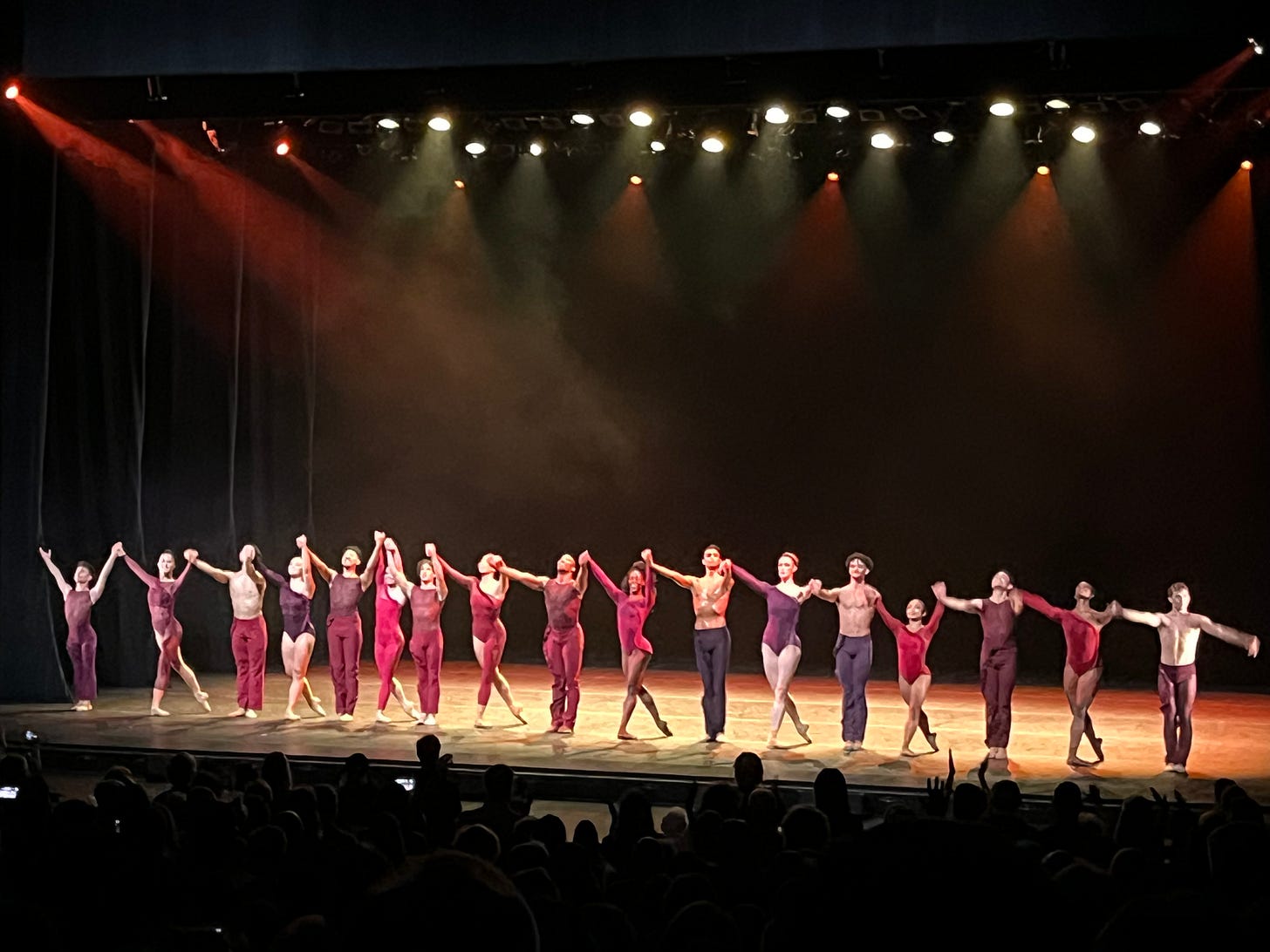Complexions presents rock ballet at Segerstrom
Last night, September 14, New York-based Complexions Contemporary Ballet presented at Segerstrom Hall a series of choreographic works by founder Dwight Rhoden set to the music of U2. Complexions has a reputation for “groundbreaking” works of hybrid contemporary dance that incorporate different cultures. While the performance I saw was essentially another contemporary dance concert, it effectively showcased its diverse and talented artists.
This impressive collective of sinewy athlete-artists was founded in 1994 by Rhoden and Desmond Richardson, former Alvin Ailey and American Ballet Theatre dancers, respectively, fusing their backgrounds to form a blend of contemporary and ballet. One of my own first dance teachers was a founding member (as she never let anyone forget), and so I have always been curious to see whether this company “breaks boundaries” in the way that their marketing materials suggest.
The first act consisted of a number of shorter dances to wet the audience's appetite and show off the dynamic range of the company. The opener Bach 25 (excerpt) to music by Johann Sebastian Bach introduced the company's off-balance contemporary ballet - athletic moves performed on pointe with legs and arms moving through extreme positions. All this moving through Bach’s classicism made for compelling contrast.
The second piece, Momentary Forevers, was markedly strange. The piece featured 6’2” Jillian Davis wearing a tutu and towering over her partner (I believe a different dancer than the one listed in the program). Her height alone makes Davis a striking figure on stage, but iconoclastic visuals and awkward if impressively executed partnering exercises were not enough to save this ballet’s inherent lack of grace or fluidity, made all the worse by the grating harpsichord music titled “Handel Remixed.” Unmix it, please.
While one male audience member belted out a “yaas” at the piece's end, this reviewer was happy to move on to Gone. The featured trio of Aeron Buchanan, Michael Cherry and Angelo De Serra’s limbs pulsated and extended into infinity under the blood red lighting and set to protest music by Odetta, “the voice of the Civil Rights movement.”
Next, the forgettable Pocket Symphony followed with company dancers clad in drab purple. Set to music by Sven Helbig, this ensemble piece mirrored the first one but contained no new revelations. Blood Calls Blood (excerpt) to music by Chief Adjuah featured standout solos by Alberto Andrade, Christian Burse, Joe González and Lucy Stewart, each showcasing technical prowess and loose-limbed power.
After intermission, For Crying Out Loud with music by U2 made up the thrust of the evening, showcasing the ensemble in “Where the Streets Have No Name,” “Every Breaking Wave,” “Vertigo” “I Still Haven’t Found What I’m Looking For,” and others. It was apparent that most audience members - including yours truly - came for this piece, eliciting barely restrained cheers throughout. Unfortunately, this enthusiasm also led to some iphone flash going off every ten seconds as people tried to record moments they presumably thought too precious to simply watch with their eyes. I understand that this is “pop ballet,” but put the damn things away. If Bono was onstage, that would be one thing, but these dancers are performing difficult feats and need to concentrate. And no, it wasn’t just the kids - a mature lady sitting next to me with expensive earrings lit up half the house with her iphone.
This piece itself contained innovative patterns and canons and showcased the strengths of each ensemble member - Rhoden knows how to utilize the talents of such a diverse array of heights and physicalities within his company - clearly a trademark for his vision of the company. However, I found that like the pieces before it For Crying Out Loud could have used dosages of lower octane energy. Every movement dynamic was stricken at full blast, every leg whacked to its extremity - and a certain running motif was a tad overused - I would have liked to see moments of subtlety and quiet as well to complement the haunting choruses in the music. Otherwise, I had trouble emotionally connecting the movement to the music. An exception to the bombast was “With Or Without You,” which Rhoden opted to make a duet between a man and woman as notes of halting uncertainty give way to romantic abandon.
Contemporary dance performances that showcase well-lit dancers without distraction of sets or projections allow the nearly 3,000 seat Segerstrom to momentarily transform into a more intimate venue. With Complexions occupying that space this time around, it is clear why this dance company has become a brand unto itself.


Thanks for the review, Robert! You missed your alma mater's beatdown of UCLA at the Rose Bowl!
A thoughtful, honest review. I sent you a message on IG regarding guesting for Scripps Ballet. Your site has no contact method so I’m leaving a comment here. We look forward to hearing from you.